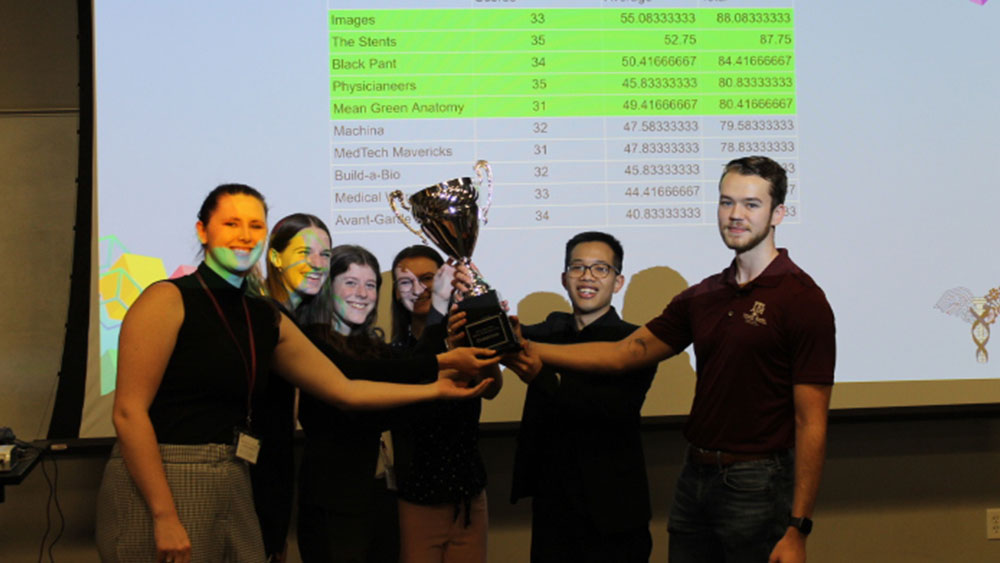
For the first time ever, the Texas A&M University chapter of the Biomedical Engineering Society (BMES) hosted the South-Southwest Medical Device Make-A-Thon (MDM). The intercollegiate design competition tasked 153 undergraduate students from nine universities, split into 31 teams, with creating a model to treat heart failure, structural or congenital defects, or cardiac arrhythmias in 48 hours.
Gavin Turnage ’23, former vice president of BMES and recent graduate, volunteered to head the 2023 MDM after participating in the 2022 competition. During his directorship, Turnage maxed out the number of participants, quadrupled the prize money and took the number of event sponsors from two to 12. Turnage also brought in more mentors, which doubled the mentoring session time for participants and made an event livestream accessible on YouTube and Instagram so spectators could keep up with the competition.
His motivation to take on the challenge stemmed from his desire to make MDM more available to his peers and enhance the visibility of the Department of Biomedical Engineering at Texas A&M.
“I wanted more of our students to have access to this,” Turnage said. “You're spending 48 hours continuously trying to learn clinical, leadership and SolidWorks skills, so they're really learning a lot. The other part is that a lot of people from out of town can see our graduate department, see our buildings."
Additionally, Turnage increased the number of judges from 14 to 20, ensuring a range of perspectives from clinicians to industry experts. The scope of professionals allowed participants to put themselves in front of future employers and exhibit their abilities in high-stress situations.
Jeremy Russell, MDM judge and territory manager for the Electrophysiology and Cardiac Rhythm Management Divisions at Abbott Laboratories, found his expectations exceeded by the event and the participants’ achievements.
“I admire the students and their courage to get up there and accept the challenge,” Russell said. “I can't articulate enough how important that is, especially at that age, to get the experience. In your life, moving forward, this adds to your skill set, and it's going to help you forever.”
Aside from the valuable learning experience from the competition, the top three placing teams won cash prizes and the first-place team, IMAGES, claimed the legacy trophy now housed in the biomedical engineering department. Phong Tran ’22, IMAGES team member and recent graduate, was ready to take on the proposed challenge. Coming from a recent internship in the cardiology space and a department heavily emphasizing design, Tran felt more than prepared to claim the legacy trophy for Texas A&M.
“While my extensive research experiences contributed a lot to my success at the Make-a-thon, my classes introduced me to FDA regulations and the approval pathway,” Tran said. “That made us think critically about potential obstacles that could arise during the development process and strategize on the business viability. There was also a design course that enforced some of the skills related to prototyping, allowing me to quickly transfer a sketch to a 3D visualization in under eight hours.”
Regarding next year’s competition, Russell advises aspiring first-place teams to become confident in their presentation and delivery of their solution. Although, he believes that simply going through the experience is a win.
“I've been thoroughly impressed with the overall knowledge, the thought process, and then the ability to take that and engineer something for a solution,” Russell said. “That was really awesome. The future is bright.”